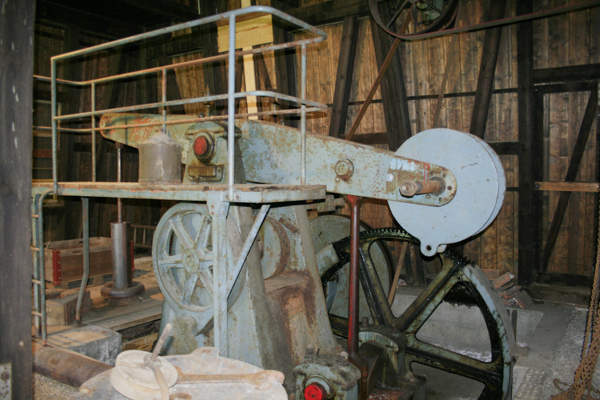Salt derricks
Impressive witnesses to the industrial era in Bad Zurzach are the salt drilling towers between Zurzacher Flecken and the banks of the Rhine. The 17-meter-high salt derricks were decommissioned in the 1970s. One of them now serves as a salt museum. Peepholes give you an insight into its inner workings, and the brine pump can be set in motion at the touch of a button.
Cornelius Vögeli had a good nose. Shortly after the definitive end of the Zurzach fairs in the middle of the 19th century, the building contractor and former mayor of Leuggern took up the trail. He could smell it, the stuff that the next upswing would be made of. The treasure lay right at his feet. Now he would lift it.
To recover the treasure, “Salzvögeli” needed money. He borrowed it from another entrepreneur, Jakob Zuberbühler. Vögeli used it to build a tower. Inside it hung the key to the underground treasure chamber – the drill bit. This ate its way through the layers of rock and encountered rock salt deep below. Cornelius Vögeli discovered this raw material for the production of table salt during test drilling in Koblenz in 1892. After further drilling attempts in the Zurzach-Rietheim area, he discovered significant salt deposits. He obtained the state concession to mine salt, but sold it again and died without having started mining.

After the Swiss Rhine Salt Works had secured the concession, the upswing began thanks to the founding of the Swiss Soda Factory in 1914: “Sodi” and later Solvay (Schweiz) AG provided many jobs for decades and shaped the social and economic structures in the area. The fact that the Zurzach thermal water was also discovered in passing thanks to Cornelius Vögeli’s sniffer is a story in itself.
Book now!
Bad Zurzach and the Zurzibiet offer surprising stories and enticing cultural and culinary delights. Whether on foot, by bike, in groups or on your own: discovering Bad Zurzach and the region is a pleasure for all generations. Combine your wellness stay with great experiences!